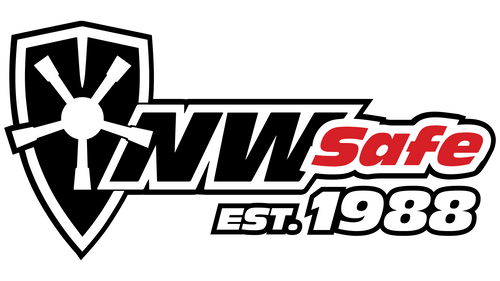Not All “Fireproof” Safes Are Equal
Independent testing and honest ratings matter more than marketing when protecting what you can’t afford to lose.
When we talk about fireproof gun safes, it’s important to clear something up right away: nothing is truly fireproof. The term “fireproof gun safe” is really a mixed-use way of saying fire-insulated gun safe.
While the name might sound a little misleading, the protection these safes provide is very real. Let’s break down what that means, how the materials work, and why independent testing matters for your peace of mind.
Why Fire Protection in a Gun Safe Matters
We all know the primary purpose of a safe is to protect against theft, but fire can be just as big of a threat. A house fire can reach extreme temperatures in minutes, and if your safe isn’t built to handle that heat, your firearms and valuables could be destroyed. That’s where fire-insulated construction comes in.
Common Fire Insulation Materials
Most manufacturers use one of two main types of insulation inside their safes:
-
Sheetrock (Drywall) Fill – This is the most common and affordable option. Sheetrock has moisture trapped inside, which turns into steam under high heat, helping cool the inside of the safe. The downside? Sheetrock has gaps and limitations. It’s not as structurally strong and doesn’t insulate as evenly.
-
Concrete-Based Fill – This is a stronger, more reliable option. It provides better fire insulation and also boosts the overall security of the safe. Concrete fill is harder to cut through, making the safe tougher against both fire and burglary attempts.
When we look at higher-quality safes, like the American Security BFX, we see the difference. This safe has double-walled steel construction, with a poured concrete-based material filling both the body and the door. That means fewer weak spots and more consistent insulation.
How the Layers Are Built
The way safes are constructed also makes a big difference. With the American Security BFX, for example, the door is designed with one inch of concrete-based insulation, while the body is built with two inches. That’s a serious barrier against extreme heat. The heavier materials up front also help create a tighter seal when exposed to fire, giving you more time before temperatures rise inside the safe.
Why Independent Testing Is So Important
Here’s where things get tricky: not all fire ratings are created equal. Many manufacturers test their safes in-house, and of course, they’re going to want their product to look as good as possible. That’s why independent, third-party testing matters.
Take American Security again. Their safes are tested by Intertek — a trusted third-party lab. This ensures that the safe was pushed through a strict, unbiased fire test. For example:
-
The furnace reaches 1200°F within just 8 minutes of the test.
-
The temperature probes are placed 7.5 inches from the ceiling inside the safe — where it gets hottest.
Why does that matter? Some manufacturers place probes much lower or average out results from different spots. That can make their safes look like they last longer in a fire than they really do. By using the highest probe location, we get the truest picture of how well the safe performs when it counts.
What You’re Really Getting with a Fire-Insulated Safe
So when you hear “fireproof safe,” remember: what you’re really looking at is a fire-insulated safe. The quality of materials, the thickness of the walls, and the construction methods all determine how well it will actually protect your valuables in a real fire.
With a concrete-filled, double-walled safe that’s been independently tested, you’re getting much more than marketing claims — you’re getting peace of mind. That way, no matter what happens, you know you’ve done everything you can to protect what matters most.
Bottom Line: No safe is 100% fireproof, but with the right construction and third-party testing, we can choose safes that give us real protection when disaster strikes.
